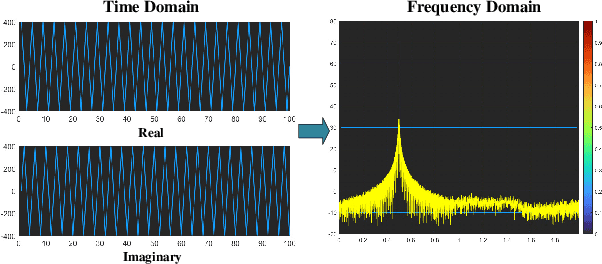Gaoyang Li
Few-Shot Recognition and Classification of Jamming Signal via CGAN-Based Fusion CNN Algorithm
Nov 09, 2023



Abstract:The precise classification of jamming signals holds paramount significance in the effective implementation of anti-jamming strategies within communication systems subject to intricate environmental variables. In light of this imperative, we propose an innovative fusion algorithm based on conditional generative adversarial network (CGAN) and convolutional neural network (CNN) to solve the problem of difficulty in applying deep learning (DL) algorithms due to the instantaneous nature of jamming signals in practical communication systems. Compared with previous methods, our algorithm achieved an 8% improvement in accuracy even when working with a limited dataset. Unlike previous research, we have simulated real-world satellite communication scenarios using a hardware platform and validated our algorithm using the resulting time-domain waveform data. The experimental results indicate that our algorithm still performs extremely well, which demonstrates significant potential for practical application in real-world communication scenarios.
Maximal Margin Distribution Support Vector Regression with coupled Constraints-based Convex Optimization
May 05, 2019


Abstract:Support vector regression (SVR) is one of the most popular machine learning algorithms aiming to generate the optimal regression curve through maximizing the minimal margin of selected training samples, i.e., support vectors. Recent researchers reveal that maximizing the margin distribution of whole training dataset rather than the minimal margin of a few support vectors, is prone to achieve better generalization performance. However, the margin distribution support vector regression machines suffer difficulties resulted from solving a non-convex quadratic optimization, compared to the margin distribution strategy for support vector classification, This paper firstly proposes a maximal margin distribution model for SVR(MMD-SVR), then implementing coupled constrain factor to convert the non-convex quadratic optimization to a convex problem with linear constrains, which enhance the training feasibility and efficiency for SVR to derived from maximizing the margin distribution. The theoretical and empirical analysis illustrates the superiority of MMD-SVR. In addition, numerical experiments show that MMD-SVR could significantly improve the accuracy of prediction and generate more smooth regression curve with better generalization compared with the classic SVR.
 Add to Chrome
Add to Chrome Add to Firefox
Add to Firefox Add to Edge
Add to Edge